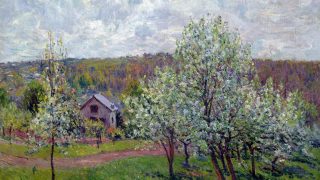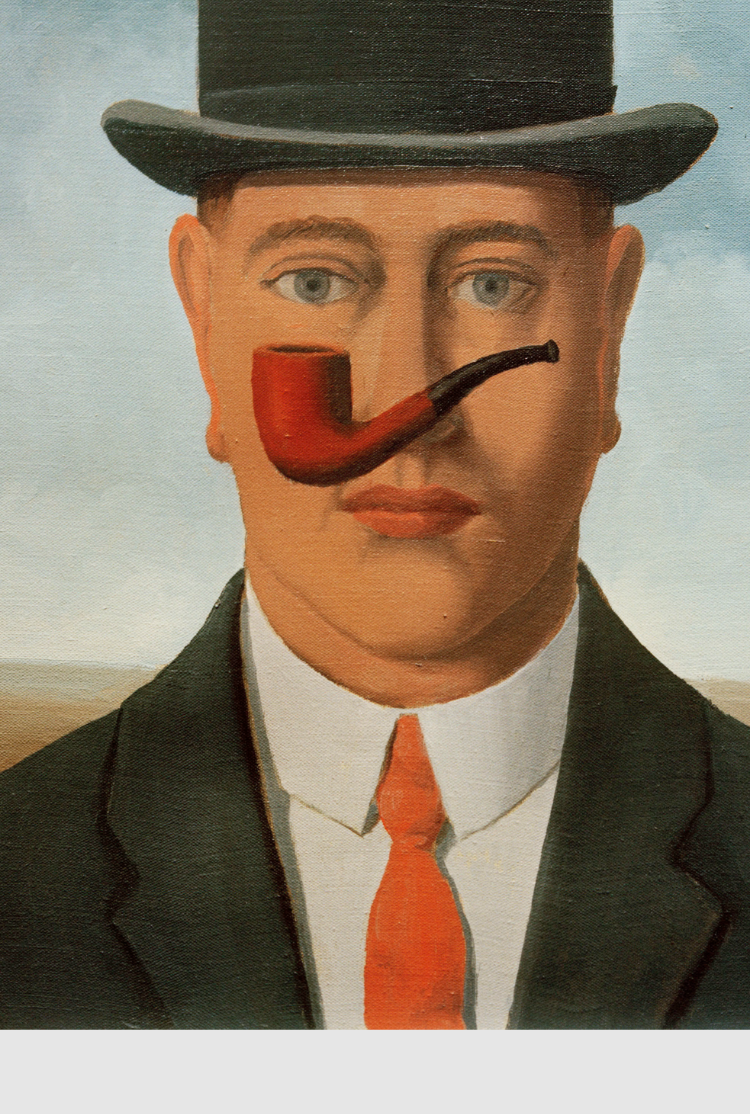What if each great period in the history of art were represented by an emblematic tree – a tree that embodied its essence, its philosophy and its heritage?
The history of art is a dense and fascinating forest, where each era unfolds its branches and forges deep links with nature. We invite you to explore the Art Explora Academy trails from a new angle, through a walk through plants and art. From the sacred kapok tree of the Mayas to the Japanese cherry blossom, from the olive tree of Antiquity to the box tree of French gardens, each tree becomes a gateway to a singular period, culture and artistic universe.
Choose the one that inspires you most and let us guide you on this journey where art takes root! 🌳✨
Olive tree: Ancient Greece and Ancient Rome

The Antimenes Painter, Amphora depicting the olive harvest, c. 520 BC.
Attic black-figured ceramics, British Museum (London)
Photo credit: © The Trustees of the British Museum
An emblematic tree of the Mediterranean basin, the olive tree played a central role in the imagination and iconography of Ancient Greece and Rome. A symbol of peace, wisdom and victory, it is closely associated with the goddess Athena and the founding myth of the city of Athens. Depicted on Attic ceramics, coins and Roman frescoes, its longevity echoes that of Greco-Roman culture and its enduring influence, which this trail dedicated to the arts of Ancient Greece and Ancient Rome invites you to discover.
Ancient Greece and Ancient RomeSycamore fig: Ancient Egypt
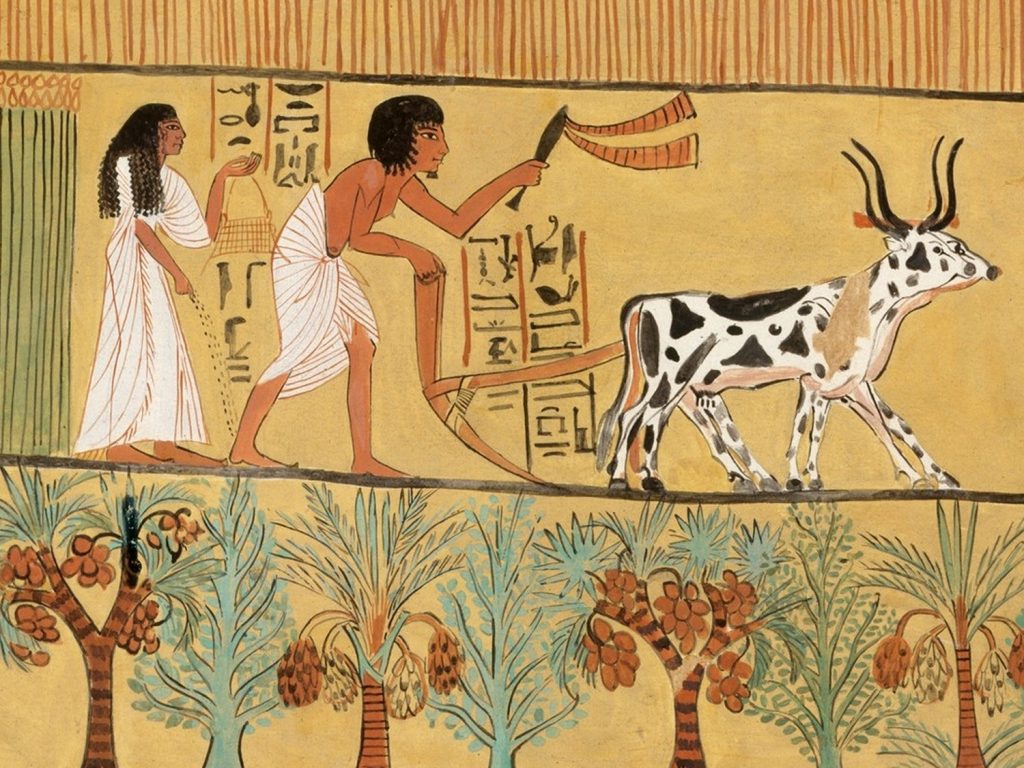
Sennedjem and his Wife Plowing and Sowing (detail), 19th dynasty (13th-12th century BC).
Wall painting, Burial chamber of Sennedjem, Deir el-Medina (Egypt)
A tree of life and wisdom, the sycamore fig was revered in ancient Egypt and Mesopotamia for its abundant fruit and spiritual symbolism. In Egypt, it adorned the walls of tombs and temples, testifying to the link between the afterlife and the divinities. Reputed to be rot-proof, its wood was used to make sarcophagi. In Mesopotamia, it rose alongside the ziggurats to form the first great human cities. Explore this trail devoted to these pioneering civilisations, which gave birth to writing and the foundations of monumental architecture, and discover an art form where the sacred and the everyday come together, between majestic bas-reliefs, colossal statues and refined frescoes.
Egypt and MesopotamiaKapokier: American Art
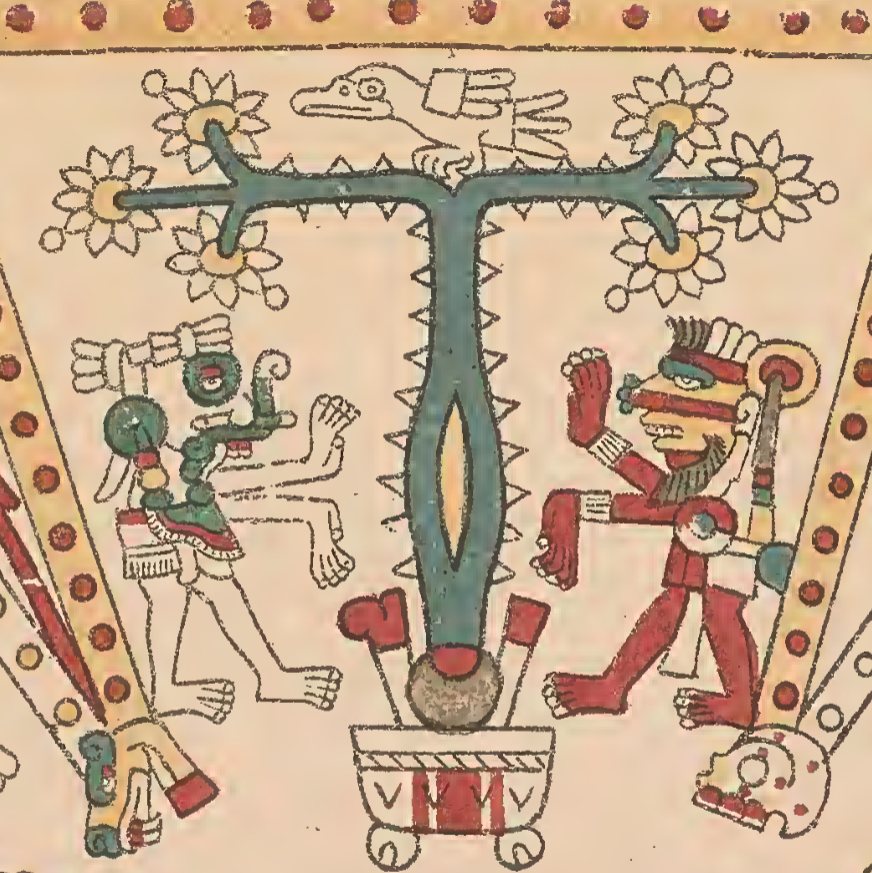
First page of the Fejérváry-Mayer Codex (detail). 15th century.
World Museum (Liverpool).
With its thorny trunk, the kapok tree (or ceiba) is a giant tree whose branches seem to touch the sky. Also known as the “World Tree”, it is considered sacred by the Mayas. In Mesoamerican beliefs, it is the link between the subterranean, terrestrial and celestial worlds. Its deep roots were a means of communication between the living world and the underworld. It reflects the richness and spirituality of pre-Columbian civilisations, which left behind monumental cities, vibrant frescoes and sculptures with enigmatic motifs. Represented in this pre-Columbian Mexican codex, it is often schematised in the form of a cross. The “Arts of the Americas” course explores the artistic heritage of the peoples of pre-Columbian America, from the Aztec codices to Inca ceramics, as well as the contemporary indigenous art that perpetuates these traditions.
American ArtDate palm: Islamic art
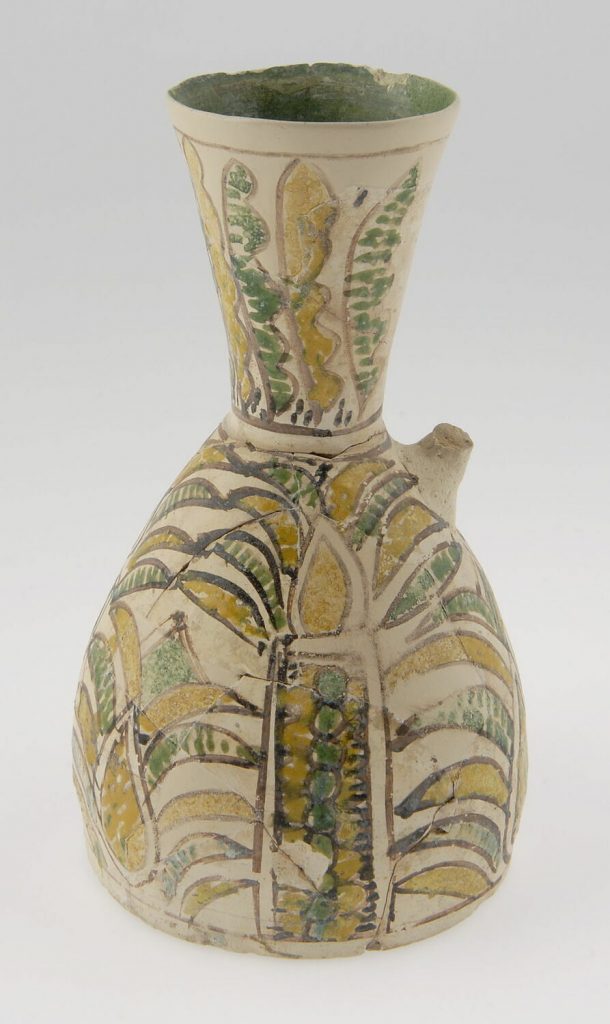
Palm tree jug, 8th-9th century.
Ceramics, Musée du Louvre (Paris), département des arts de l’Islam (OA 7937)
Photo credit: © Musée du Louvre, Dist. GrandPalaisRmn / Claire Tabbagh
An emblematic tree of the oases of the Near East, the date palm is a recurring motif in Islamic iconography, where it evokes the garden of paradise. The palm tree motif, which first appeared in Egypt and Mesopotamia, was widely used in the ancient Mediterranean. Islamic art, which favoured vegetal or geometric motifs over figurative representations, gave it a prominent place. Mentioned in the Koran, it is magnified in illuminated manuscripts and ceramics. It is often represented in a stylised manner in the form of palmettes. The “Islamic Art” course invites you to discover a subtle and codified art, where ornamentation becomes a language in its own right.
Islamic ArtCherry tree: Asian Art
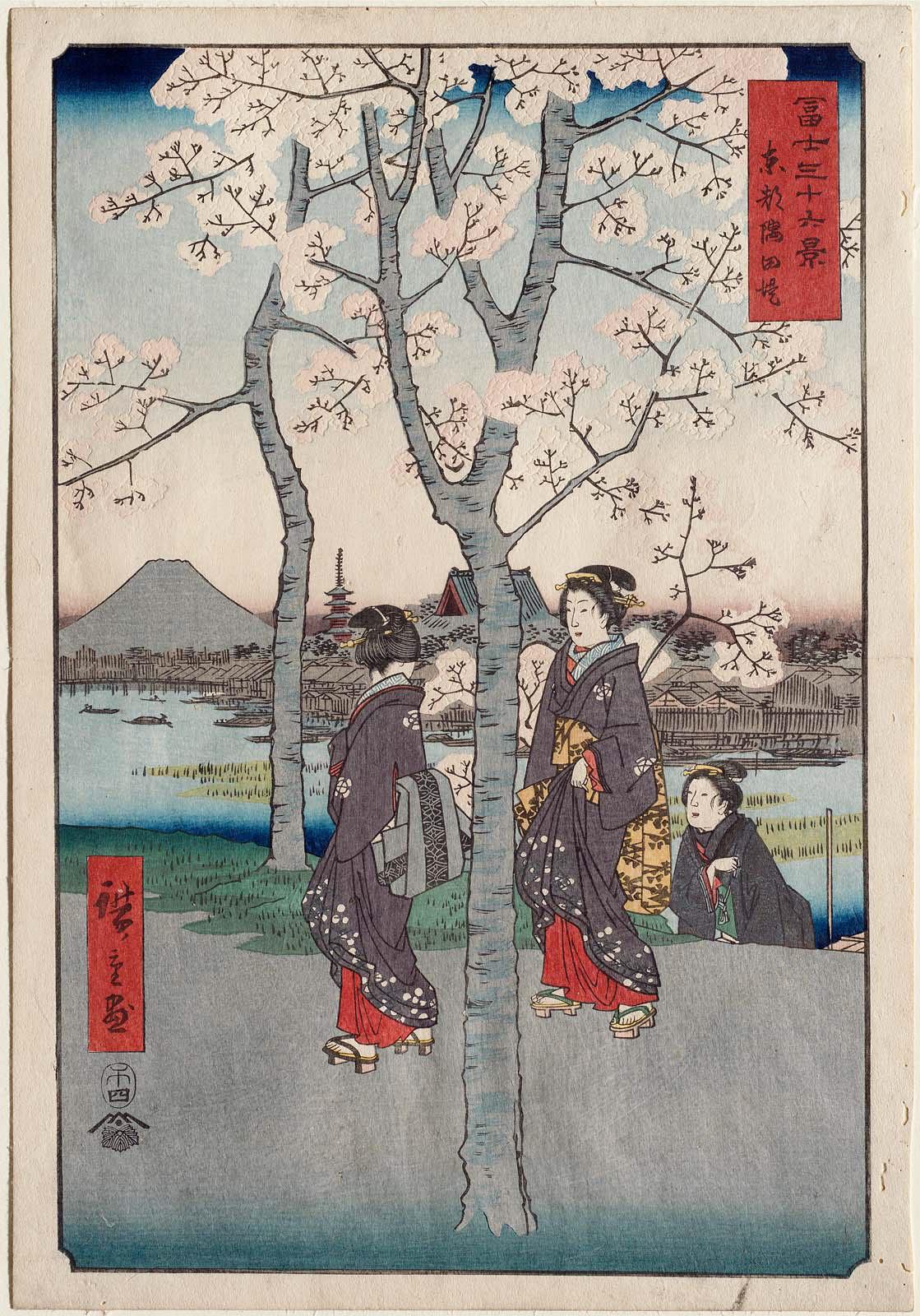
Utagawa Hiroshige, The Sumida River Embankment (Thirty-six Views of Mount Fuji), 1858.
Print, 35.9 × 24.7 cm, Museum of Fine Arts (Boston)
An emblematic tree in the Japanese landscape, the cherry blossom (or sakura) embodies the ephemeral beauty and contemplation of nature. Its grandiose flowering in early spring, with its subtle variations in colour, has given rise to an ancestral ritual known as hanami. From Hokusai to Hiroshige, the greatest masters of Japanese printmaking have celebrated the intensity and transience of this unique moment, when everyone is invited to meditate on the fragility of existence, to contemplate nature in search of wisdom. This course on Asian art invites you to immerse yourself in a world where every detail carries a profound meaning.
Asian ArtBaobab tree: African Arts
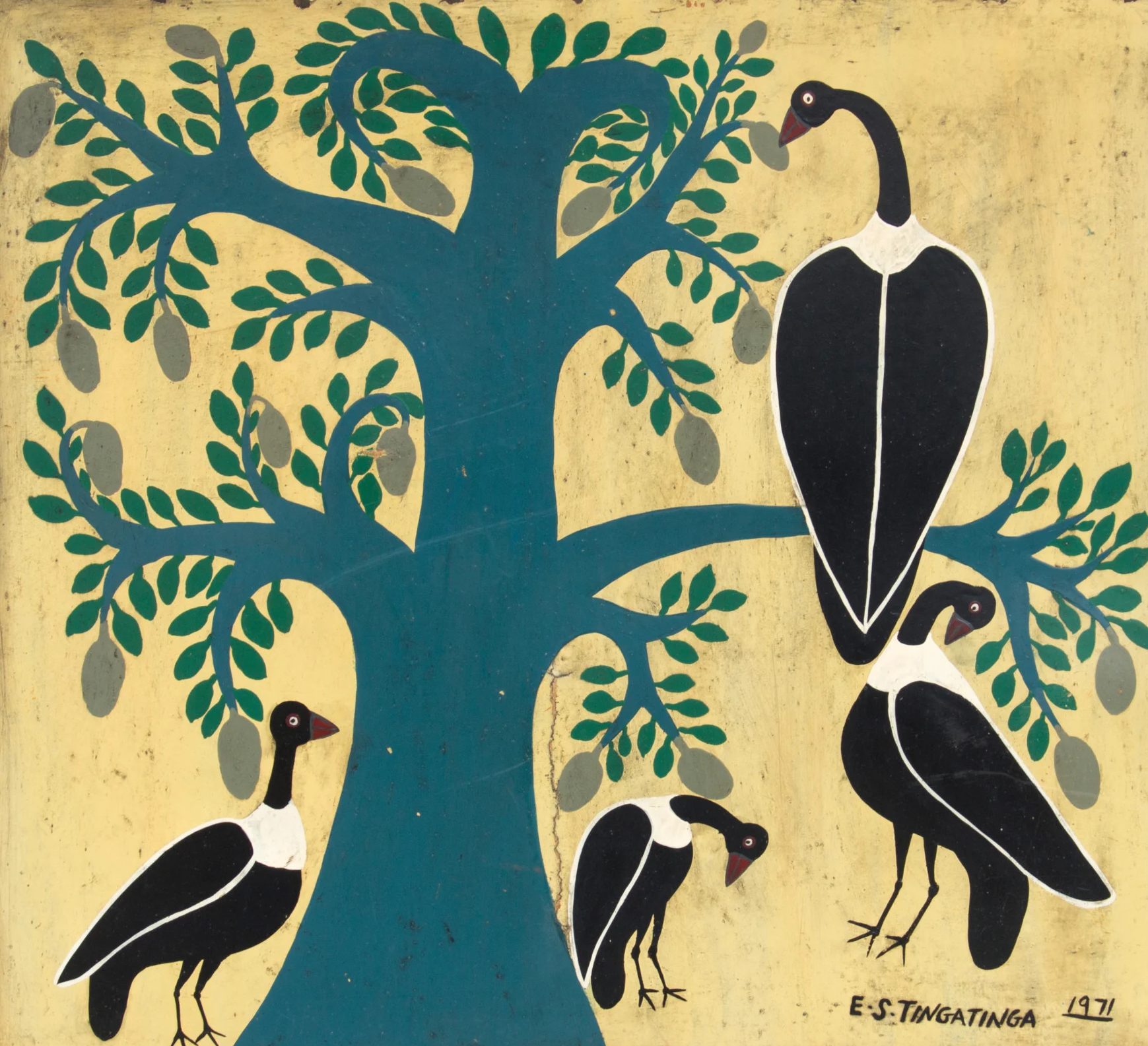
Edward Saidi Tingatinga, Baobab Tree With Birds, 1971.
Enamel Pail on board.
Droits réservés
Ubiquitous in the landscapes of sub-Saharan Africa, the baobab tree is at the heart of African societies. Nicknamed the “palaver tree”, it embodies wisdom and unity in oral traditions and community ceremonies. Anchored in the collective imagination, its majestic, gnarled forms are reminiscent of traditional sculptures and masks, which draw their strength from ancestral beliefs. The tree continues to influence contemporary artists, from design and textile arts to photography and performance art. Discover the unique aesthetics of this part of the world through this exhibition devoted to the arts of Africa.
African ArtsOak: Medieval Art
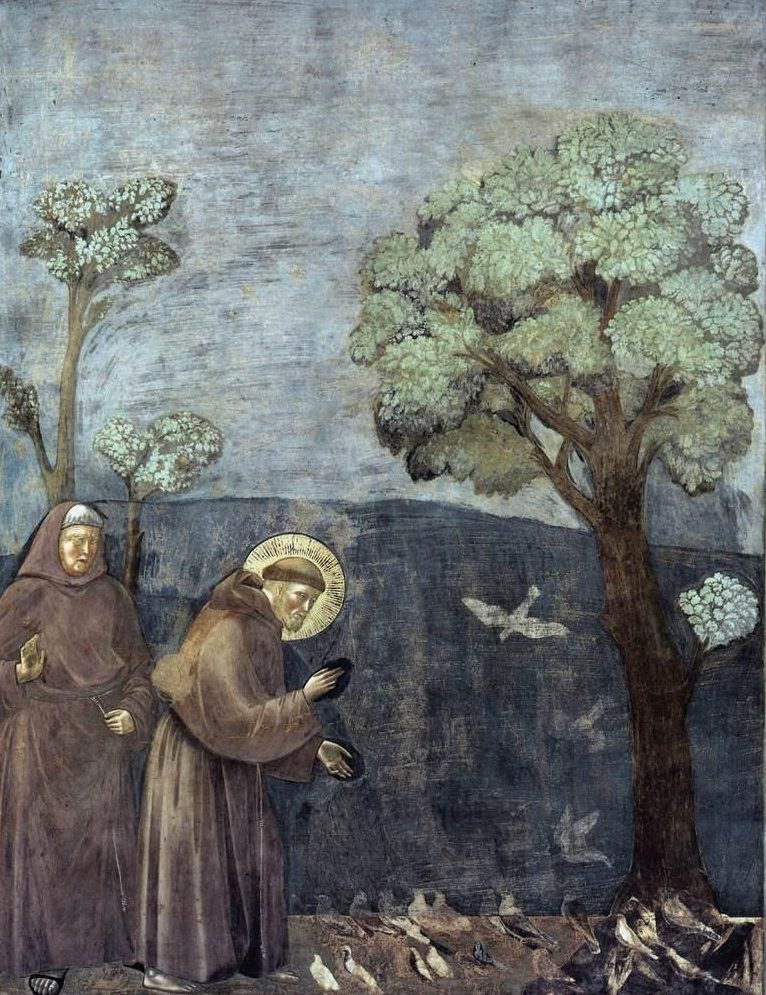
Giotto, “Sermon to the Birds”, Frescoes depicting the life of Saint Francis in Assisi (detail), 13th century.
Basilica of St Francis (Assisi).
Majestic with its sturdy trunk, extensive branches and dense foliage, the oak was a revered tree in the Middle Ages. Its great resilience made it an image of physical and moral strength. It is found in Christian iconography in medieval Europe, as well as in architecture. It embodies the unshakeable Christian faith and the ability to overcome adversity. It is also a symbol of longevity and wisdom. From illuminated manuscripts to the sculptures on church spandrels, this course on the arts of the Middle Ages reveals an art in which every image is a message, every motif a coded language to be deciphered.
Medieval ArtBoxwood: Renaissance and Enlightenment
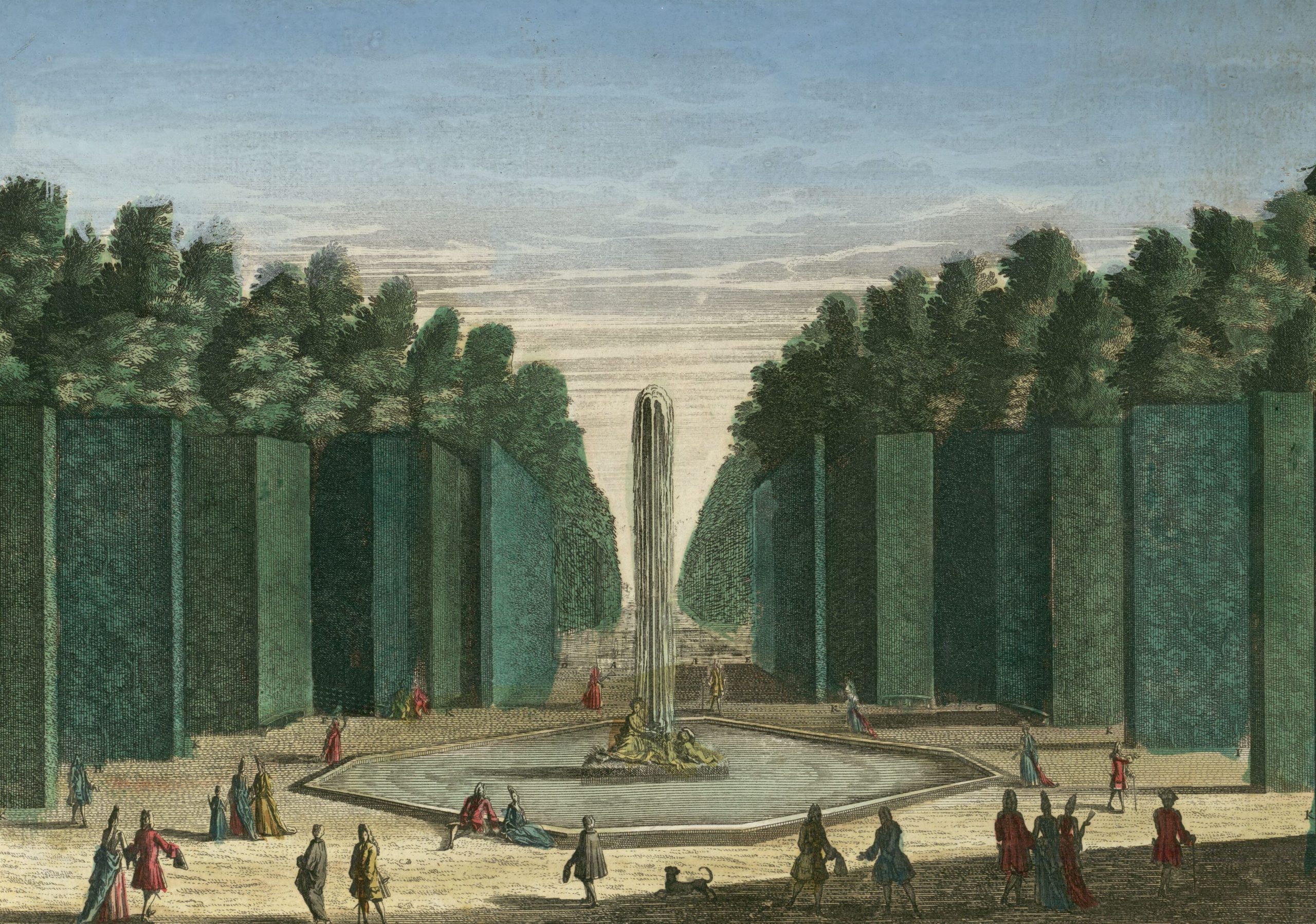
Maurice Baquoy, The Fountain of Ceres in the gardens of the Château de Versailles, 17th century.
Print, 24.3 × 39.8 cm, Bibliothèque nationale de France (Paris), département des Estampes et de la photographie, RESERVE QB-370 (18)-FT 4
Precisely pruned, boxwood is the undisputed star of the French garden. It embodies order, harmony and man’s mastery of nature, values dear to the artists and thinkers of the Renaissance and the Age of Enlightenment. A symbol of eternity, it lends itself ideally to plant sculpture. It gave structure to the landscape compositions of André Le Nôtre, just as perspective revolutionised painting and architecture. From Leonardo da Vinci to the gardens of Versailles, the frescoes, palaces and sculptures of this period bear witness to a quest for perfection and idealised beauty. Explore this journey dedicated to the art of the Renaissance and the Enlightenment, where rigour and elegance meet.
Renaissance and EnlightenmentPoplar: 19th-century art

Claude Monet, Wind Effect, Series of The Poplars, 1891.
Oil on canvas, 100 × 74 cm, Musée d’Orsay (Paris).
Photo credit: © RMN-Grand Palais (Musée d’Orsay) / Patrice Schmidt
The poplar, with its slender silhouette and leaves that vibrate in the wind, perfectly embodies the spirit of the 19th century, a time of profound social, political… and artistic transformations. This is particularly evident in the paintings of Corot, Monet, Van Gogh and Daubigny. Plein air painting marked the emergence of a new way of representing the world. Poplar was magnified, making it possible to capture the subtle changes in light and landscape. From the Romantics to the avant-gardes, the artists of this century overturned codes, exploring emotion, colour and movement. This tour of the art of the 19th century invites you to follow the breath of the poplar tree and discover a century of artistic effervescence, when everything changed and everything was invented.
19th-century artBirch: 20th-century modern art
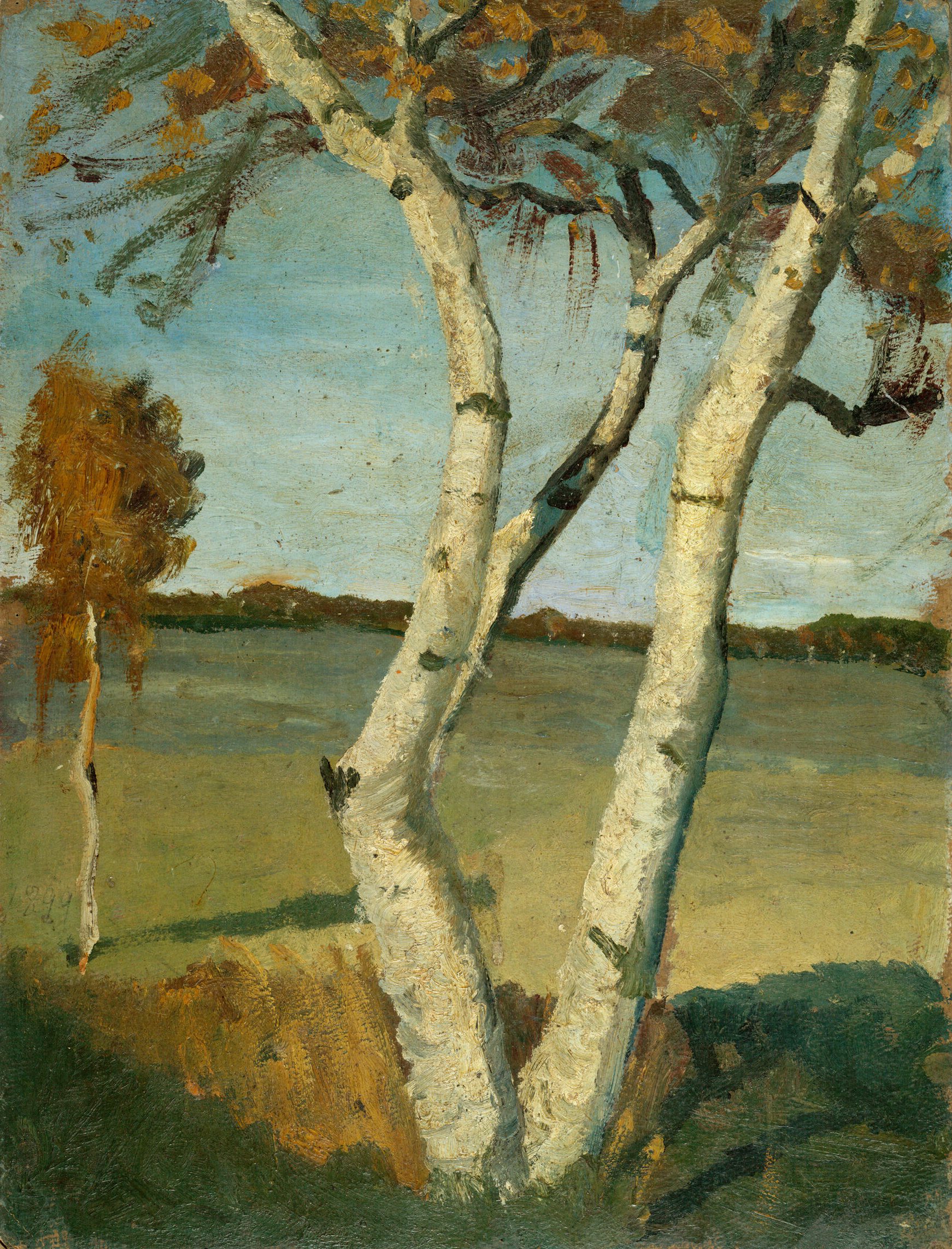
Paula Modersohn-Becker, Birch Tree in a Landscape,1899.
Oil on composite board, 55 × 42 cm, Harvard Museums of Art (Cambridge).
Photo credit: © President and Fellows of Harvard College
Birch, with its clean lines and ever-renewing bark, reflects the spirit of the 20th century, marked by experimentation and transformation. It evokes the avant-garde and innovation. From the geometric abstraction of Mondrian to the organic forms of Matisse, via the surrealism of Magritte and the boldness of Art Deco, this art in perpetual motion pushes back the boundaries of figuration and medium. The “20th-century modern art” tour explores the major artistic revolutions of the last century that redefined the way we see and experience art.
20th-century modern artBamboo: Contemporary Art
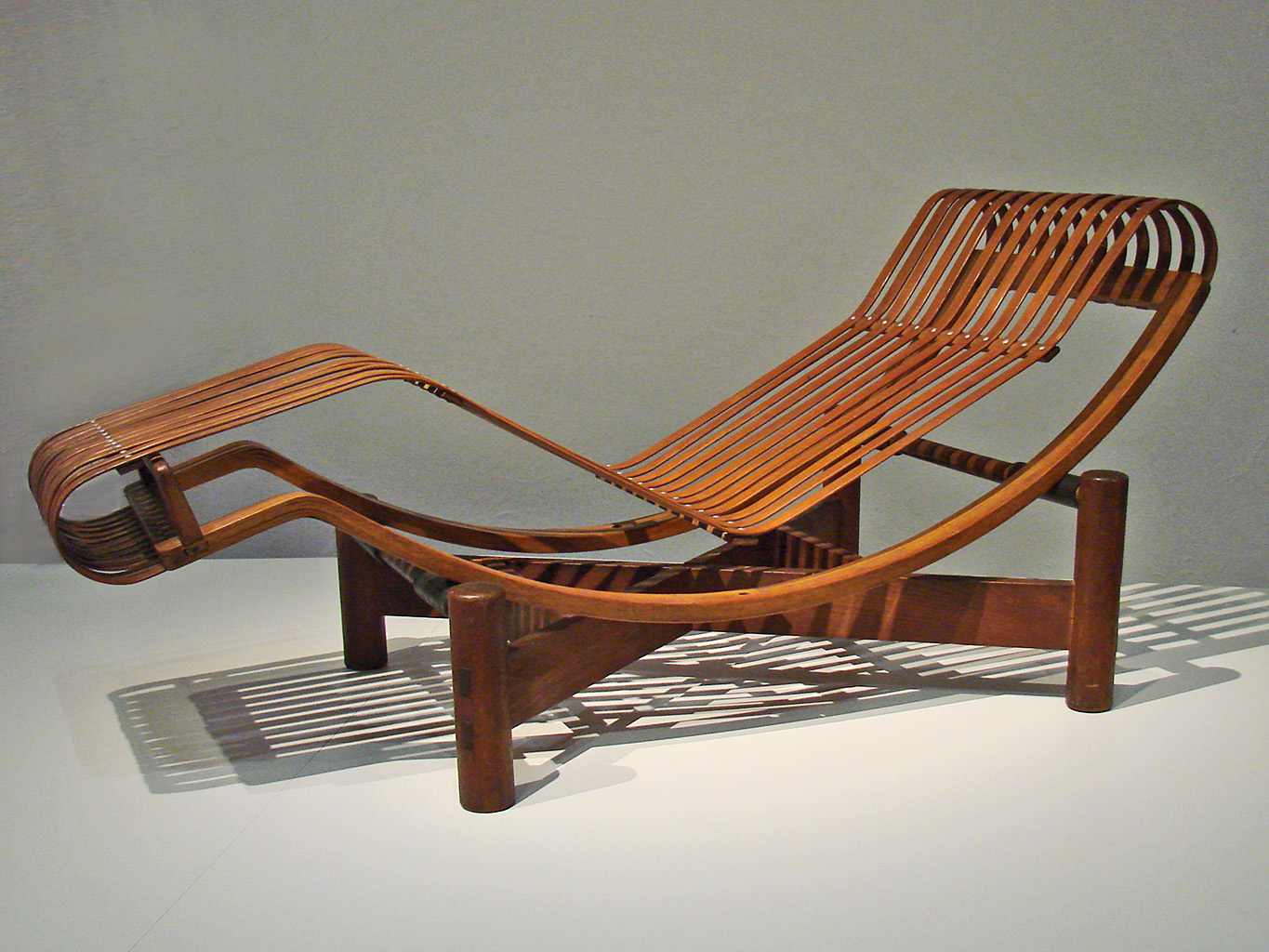
Charlotte Perriand, Chaise longue en bambou, 1941.
Musée des arts décoratifs (Paris). © Adagp, Paris, 2025
Photo credit: Jean-Pierre Dalbéra
Flexible and constantly growing, bamboo symbolises the adaptability of contemporary art. Its underground rhizomes evoke the multiple ramifications of contemporary art and the unpredictable connections between artistic disciplines. Used extensively as a material in contemporary artistic practices (installations, land art, design), its rapid growth can symbolise experimentation and renewal, markers of the contemporary artistic landscape that this trail invites visitors to discover. From immersive installations to digital art and performance, today’s art is pushing back the boundaries and questioning our times with force and creativity. Discover the richness of contemporary art with this course.
Contemporary ArtWeeping Willow: The Impressionist Adventure
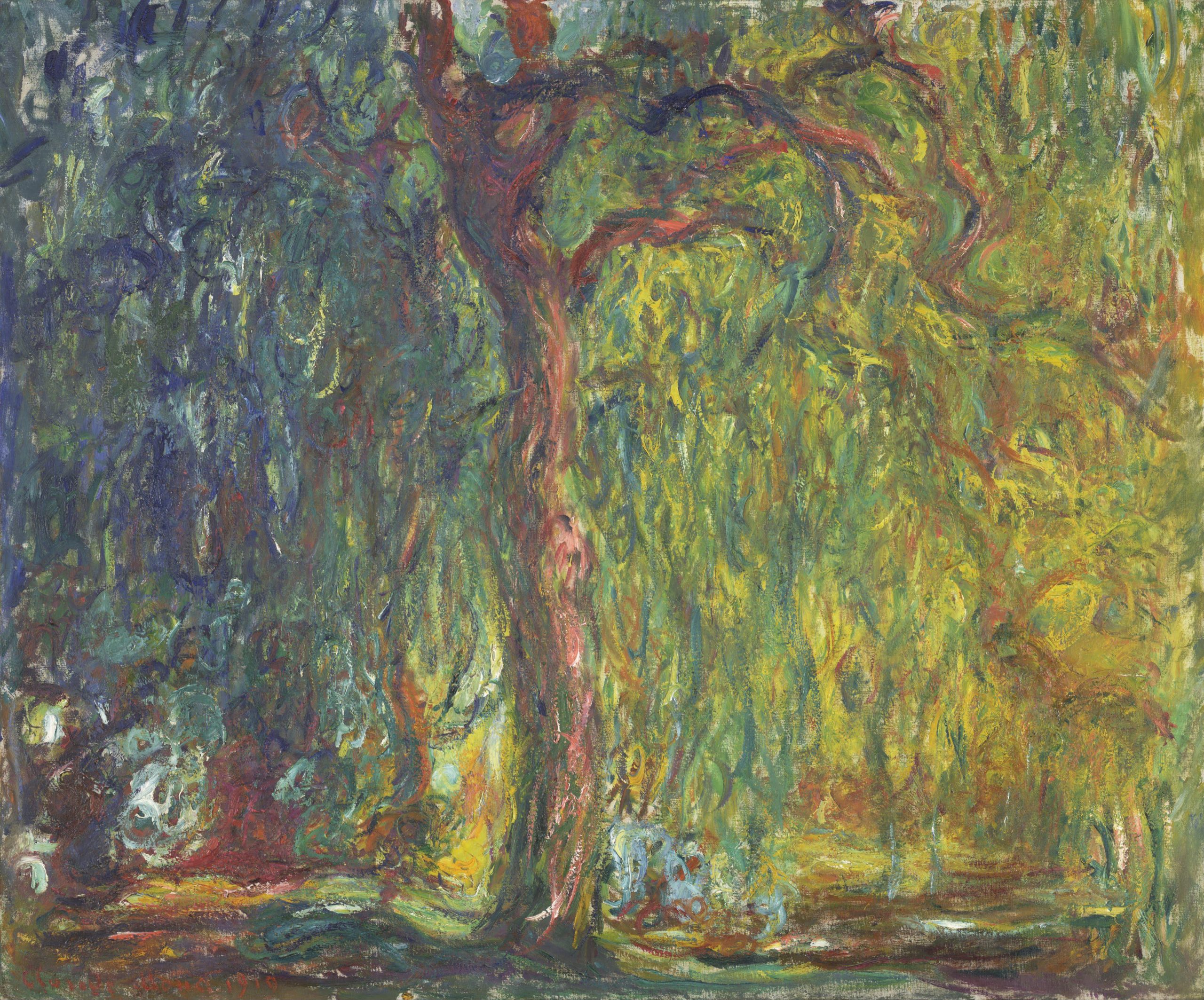
Claude Monet, Weeping Willow, 1918-1919.
Oil on canvas, 100 × 120 cm, Kimbell Art M (Fort Worth, Texas).
With its undulating branches, the weeping willow recalls the Impressionists’ taste for movement and vibrant brushstrokes. The weeping willow is very much in evidence in Monet’s Giverny, where he painted its reflections on the water, as well as in Renoir’s and Caillebotte’s paintings, where the drooping foliage creates the play of light characteristic of the Impressionist aesthetic. It reflects a new sensibility, a desire to capture the moment and the emotion of the fleeting moment. Embark on the Impressionist adventure with this course designed in partnership with the Musée d’Orsay!
The Impressionist AdventureApple tree: Art of the Everyday – Modern and Contemporary Still Life
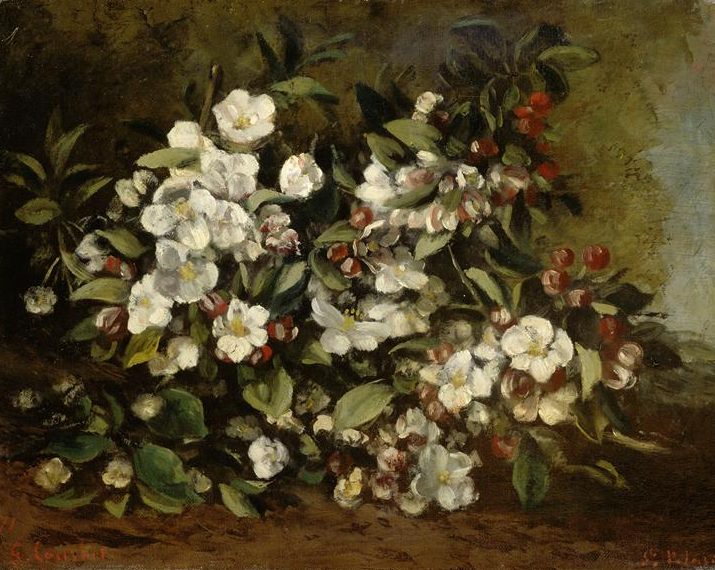
Gustave Courbet, Branch of apple blossoms, 1872.
Oil on canvas, 32.2 × 41.0 cm, Musée d’Orsay (Paris).
Photo credit: © RMN-Grand Palais (Musée d’Orsay) / Hervé Lewandowski
A familiar orchard tree, the apple tree reminds us that beauty is sometimes hidden in the simplest things. Its fruit is frequently featured in still lifes, symbolising both the ordinary and deeper meanings, such as knowledge or temptation, reflecting art’s ability to sublimate the everyday. With this course on the art of the everyday, discover how artists transform the banal into masterpieces.
Art of the EverydayHenna: Women in Art in the Mediterranean
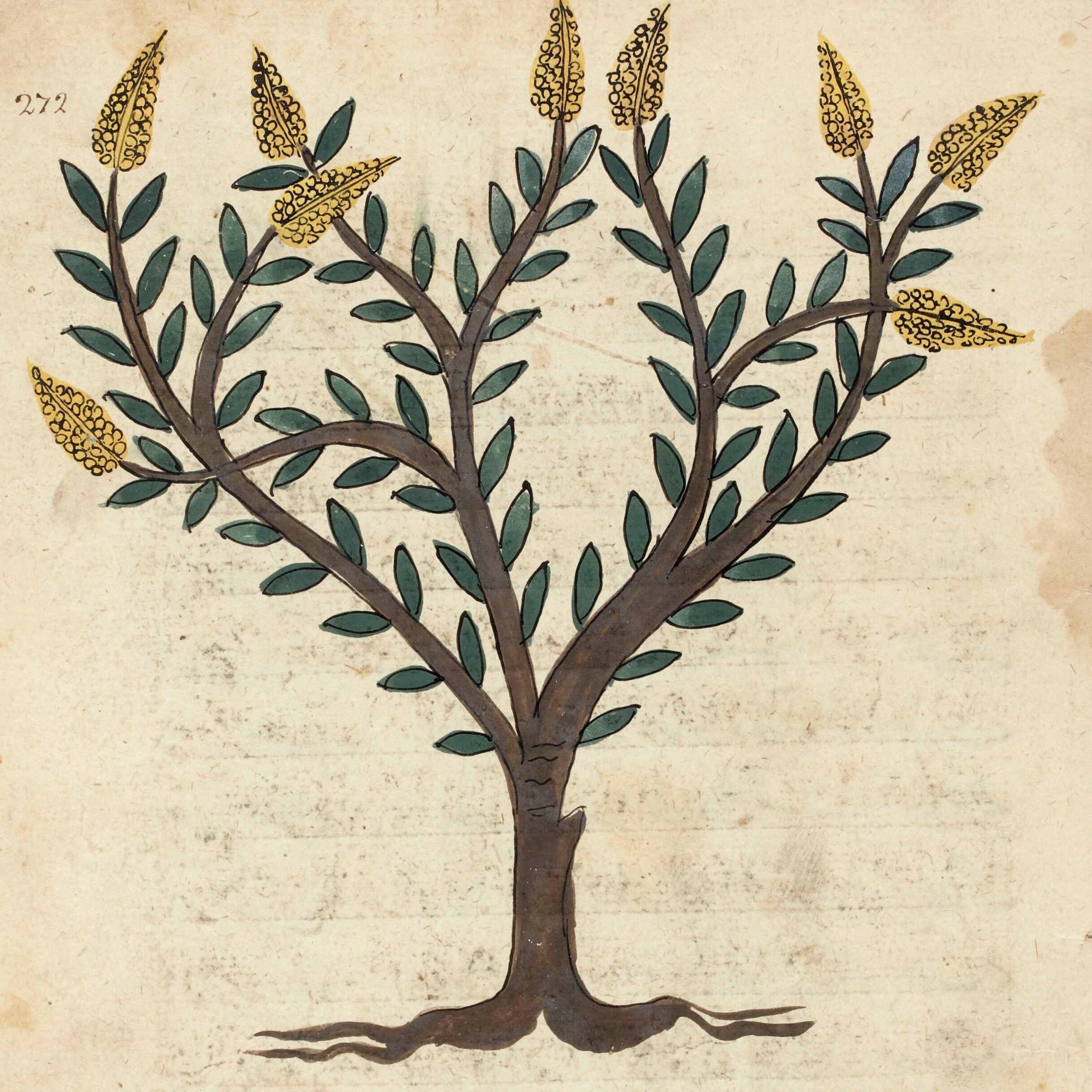
Ibn Fadl Allah al-‘Umârî, Masâlik al-absâr fî mamâlik al-amsâr (Paths to travel with the eyes in kingdoms with large capitals), 20th volume, 14th century.
Bibliothèque nationale de France, département des Manuscrits, Arabe 2771 fol. 272.
An ancestral plant with ritual uses, henna is used in many Mediterranean cultures. A vegetable dye used to adorn the body at weddings and festivals, it evokes femininity, celebration and the transmission of knowledge and everyday gestures. From Ottoman miniatures to North African frescoes, its arabesques evoke both the intimacy of the gesture and feminine power. Its ephemeral yet profound mark can be found in many artistic works, evoking the imprint left by women on Mediterranean art. Let yourself be guided by the traces of henna, mirror of a living tradition between art, ritual and identity.
Women in Art in the Mediterranean